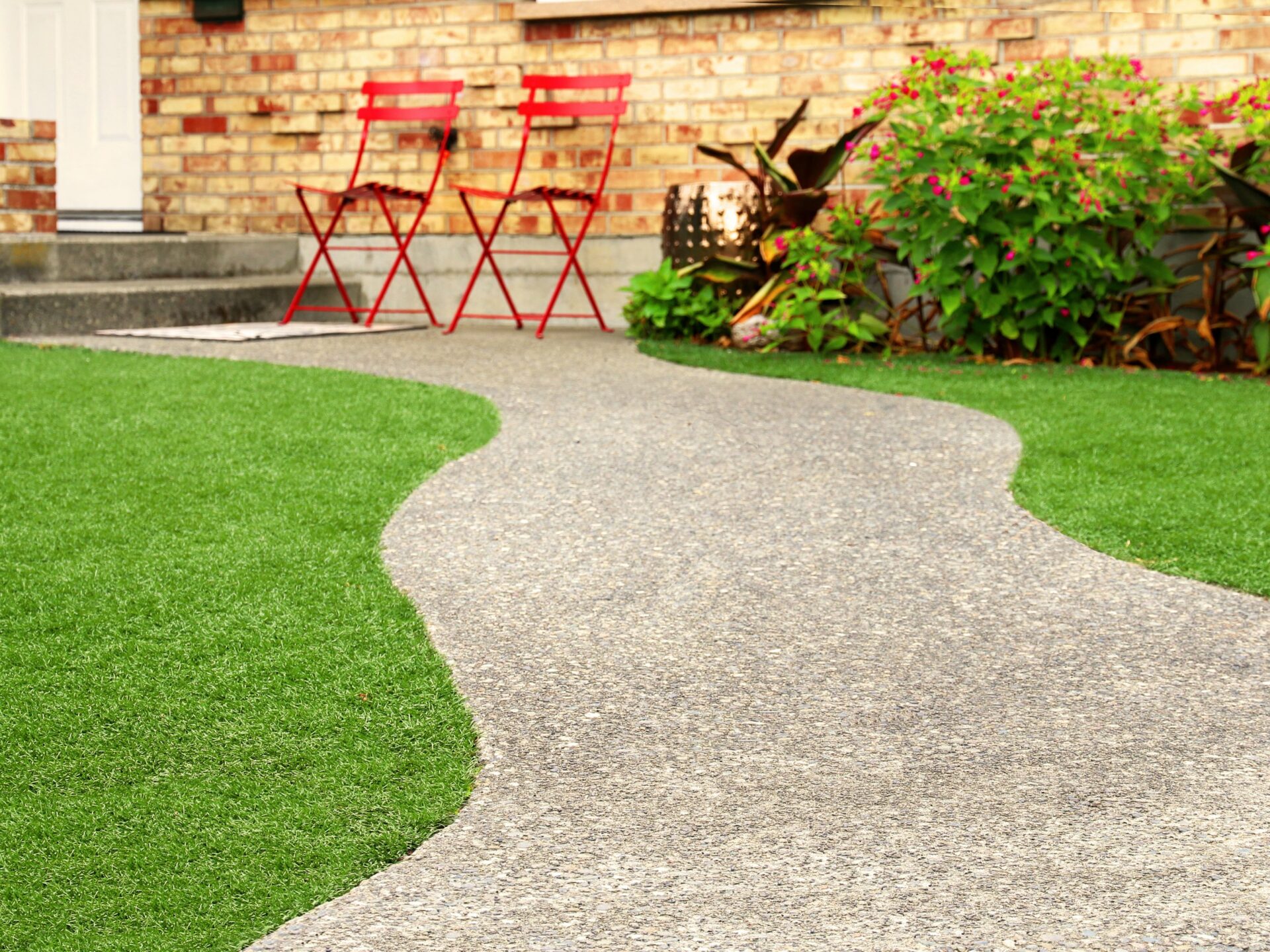
The Environmental Impact of Artificial Turf: An Analytical Perspective
Introduction The use of artificial turf has surged in recent […]
Post Author:
Diana B.
Date Posted:
September 2, 2023
Share This:
Introduction
The use of artificial turf has surged in recent years, from residential lawns to sports fields and commercial landscapes. This growing popularity sparks a crucial debate: what is the environmental impact of artificial turf? At Premium Grass Blades, we aim to provide an analytical perspective on this issue, highlighting the key environmental benefits and challenges associated with artificial turf. In this blog, we will explore the effects on water conservation, chemical use reduction, carbon footprint, and end-of-life disposal.
Water Conservation
1. Natural Grass Water Requirements
Natural grass requires a substantial amount of water to remain lush and green, especially in arid climates. On average, maintaining a traditional lawn can consume up to 55 gallons of water per square foot annually. This extensive water usage is a significant environmental concern, particularly in regions facing water scarcity.
2. Artificial Turf Benefits
Artificial turf offers a compelling solution to this issue by eliminating the need for watering. Once installed, synthetic grass remains green and vibrant without a single drop of water. This dramatic reduction in water usage can lead to significant environmental benefits, particularly in drought-prone areas.
3. Real-World Examples
Consider the city of Los Angeles, which implemented a turf replacement program encouraging residents to switch from natural grass to synthetic alternatives. As a result, the city has saved millions of gallons of water annually, showcasing the substantial impact that artificial turf can have on water conservation.
Chemical Use Reduction
1. Natural Grass Maintenance
The maintenance of natural grass often involves the application of pesticides, herbicides, and fertilizers. These chemicals pose environmental risks, contaminating soil and water sources and harming local ecosystems. Additionally, they present health risks to humans and animals exposed to them.
2. Chemical-Free Maintenance of Artificial Turf
Artificial turf requires no chemical treatments, providing a cleaner and safer alternative. By eliminating the need for pesticides and fertilizers, synthetic grass helps reduce chemical runoff and soil contamination, contributing to healthier ecosystems and safer environments.
3. Impact on Local Ecosystems
The reduction of chemical usage benefits local wildlife and plant life. Without the presence of harmful substances, ecosystems can thrive, promoting biodiversity and environmental health.
Carbon Footprint
1. Natural Grass Maintenance Equipment
Maintaining a natural grass lawn typically involves the use of gas-powered equipment such as lawn mowers, trimmers, and blowers. These machines contribute to greenhouse gas emissions, with the average lawn mower producing as much pollution in one hour as 11 cars.
2. Reduced Emissions with Artificial Turf
Artificial turf requires minimal maintenance, significantly reducing the need for gas-powered equipment. This reduction translates to lower carbon emissions and a smaller overall carbon footprint. Over time, the carbon savings from using synthetic grass can be substantial.
3. Overall Environmental Impact
When comparing the carbon footprints of natural grass and artificial turf over their respective lifespans, synthetic turf emerges as the more environmentally friendly option. The long-term environmental benefits of reduced emissions and lower maintenance requirements highlight the advantages of artificial turf.
End-of-Life Disposal
1. Lifespan of Artificial Turf
The average lifespan of artificial turf ranges from 10 to 20 years, depending on usage and maintenance. Advances in manufacturing have enhanced the durability and longevity of synthetic grass, extending its useful life and reducing the frequency of replacement.
2. Disposal and Recycling
Disposing of artificial turf presents challenges, as it often ends up in landfills. However, current recycling methods are improving, allowing for the repurposing of synthetic materials. At Premium Grass Blades, we are committed to promoting and utilizing recycling initiatives to minimize environmental impact.
3. Sustainable Practices
Manufacturers are increasingly focusing on creating more sustainable artificial turf products. Innovations in recyclability and the use of eco-friendly materials are paving the way for a more sustainable future in synthetic grass production.
Holistic Environmental Perspective
1. Balancing Pros and Cons
While artificial turf offers significant environmental benefits, it is important to consider the full lifecycle impact. From production to disposal, the environmental footprint of synthetic grass must be balanced against its benefits in water conservation, chemical use reduction, and carbon footprint.
2. Alternative Solutions
Artificial turf is one of many sustainable landscaping options available. Other solutions, such as drought-resistant plants and xeriscaping, also offer environmental advantages. Integrating artificial turf with these alternatives can create a comprehensive approach to sustainable landscaping.
3. Future Outlook
The future of artificial turf is promising, with ongoing technological advancements enhancing its environmental benefits. As recycling methods improve and sustainable practices become more widespread, synthetic grass will continue to play a key role in sustainable urban planning and water conservation.
Conclusion
Summary of Key Points
Artificial turf offers numerous environmental benefits, including water conservation, reduced chemical use, and a lower carbon footprint. While challenges remain, particularly in end-of-life disposal, ongoing innovations are addressing these issues and promoting a more sustainable future for synthetic grass.
Final Thoughts
Making informed decisions about landscaping options is crucial for environmental sustainability. At Premium Grass Blades, we encourage you to consider the environmental advantages of artificial turf as part of your commitment to sustainable living.
Interested in learning more about the environmental impact of artificial turf? Contact Premium Grass Blades today for expert consultations and information on our sustainable synthetic grass products.


